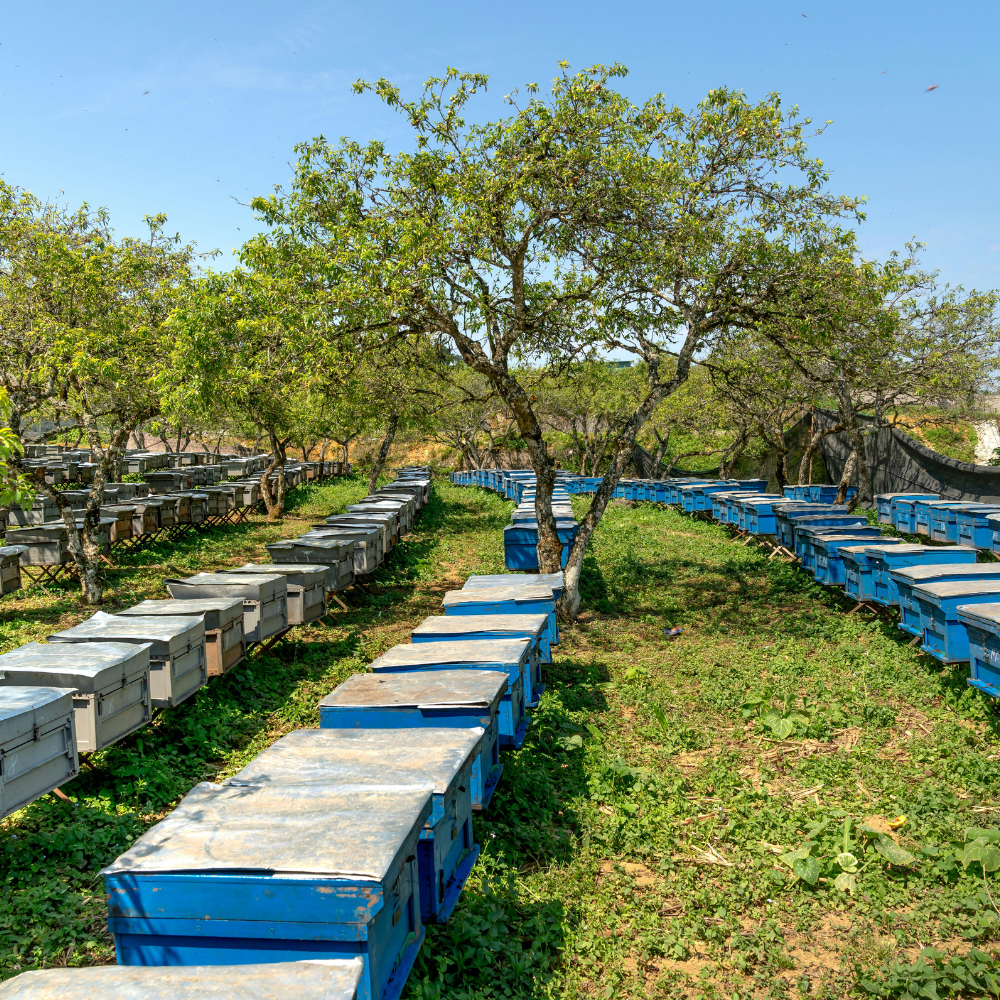
Beehive Farming: A Comprehensive Guide to Sustainable Beekeeping
Share
Beehive Farming: A Comprehensive Guide to Sustainable Beekeeping
Introduction
Beehive farming, also known as apiculture, is the practice of maintaining bee colonies in hives to produce honey, beeswax, and other valuable bee products. Beyond economic benefits, beehive farming plays a crucial role in pollination, contributing to food production and biodiversity conservation.
The Importance of Beehive Farming
Beehive farming supports both agriculture and ecosystems by providing pollination services. Managed hives help sustain crop yields and ensure the survival of various plant species. Additionally, honeybee farming creates job opportunities and promotes rural development.
Types of Beehives
1. Langstroth Hive
This is the most common hive type used in modern beekeeping. It consists of stacked wooden boxes with removable frames for easy honey extraction.
2. Top-Bar Hive
A simpler, horizontal hive structure used primarily in small-scale or sustainable beekeeping operations. It allows natural comb-building by the bees.
3. Warre Hive
A vertical hive that mimics natural bee nesting behavior, promoting less intervention from beekeepers while ensuring colony health.
Setting Up a Beehive Farm
1. Choosing a Suitable Location
Selecting a bee-friendly location is critical for successful beehive farming. A good site should have ample flowering plants, a clean water source, and protection from extreme weather conditions.
2. Acquiring Bee Colonies
Beekeepers can obtain bees by capturing wild swarms, purchasing nucleus colonies from breeders, or splitting existing hives.
3. Providing Proper Hive Management
Regular inspections ensure hive health. Beekeepers must check for diseases, pests, and adequate food supplies, especially during winter months.
Products of Beehive Farming
1. Honey
The primary product of beehive farming, honey is harvested, filtered, and sold as raw or processed honey.
2. Beeswax
Beeswax is used in candle-making, cosmetics, and natural household products.
3. Propolis
Collected by bees from tree resins, propolis has antibacterial properties and is used in health supplements.
4. Royal Jelly
A nutrient-rich secretion fed to queen bees, royal jelly is marketed for its potential health benefits.
Challenges in Beehive Farming
1. Pests and Diseases
Varroa mites, hive beetles, and bacterial infections can threaten bee colonies. Regular monitoring and natural treatment methods help prevent infestations.
2. Climate Change and Habitat Loss
Changes in weather patterns and loss of wildflowers reduce forage availability for bees, impacting hive productivity.
3. Pesticide Exposure
Agricultural pesticides can poison bees and reduce colony numbers. Advocating for pollinator-friendly farming practices is crucial.
Sustainable Beekeeping Practices
- Planting bee-friendly flowers to provide food sources.
- Using organic pest control methods to protect colonies.
- Educating communities on the importance of bee conservation.
- Practicing ethical honey harvesting to maintain bee colony health.
Conclusion
Beehive farming is an essential practice that supports environmental sustainability, economic growth, and global food security. By implementing sustainable beekeeping methods, farmers can contribute to the well-being of both bees and humans. With proper care and management, beekeeping can be a rewarding and impactful venture for generations to come.
